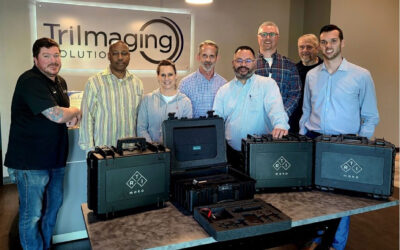Sponsored by Technical Prospects

Birthday balloons and funny chipmunk voices aside, there are some serious implications to the ongoing global helium shortage.
Helium may be one of the most-abundant elements in the universe, but here on Earth it’s also one of the lightest. So, it tends to float away into the atmosphere and escape into outer space given the chance.
Industries that make use of helium are struggling to meet demand due to a dwindling supply. That includes a very important purpose in medical imaging. Liquid helium is used to cool superconducting magnets in magnetic resonance imaging (MRI) machines.
Helium shortages aren’t exactly new. In fact, balloons in the 1958 Macy’s Thanksgiving Day Parade were filled with regular air that year due to poor helium availability. Unfortunately, that’s not a feasible solution for MRIs.
The publication Gasworld reports that around 75% of the world’s helium is produced in just three locations, including Qatar, Wyoming, and Texas. That’s one reason why, according to an article in the New York Times, if you rely on helium, eventually your supplier will “let you down” and make you wait.
One of the biggest worries is how the current shortage could hamper healthcare providers’ ability to make important diagnoses. In-house imaging engineers and field service engineers (FSEs) play a crucial, behind-the-scenes role in helping hospitals and clinics avoid that possibility.
Fill out the form to learn more about how helium shortages impact medical imaging engineers and access a high res document to use as a quick reference when performing PMs or while evaluating helium levels in Siemens MRI models on any site visit.







